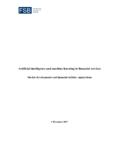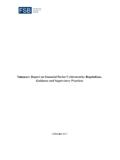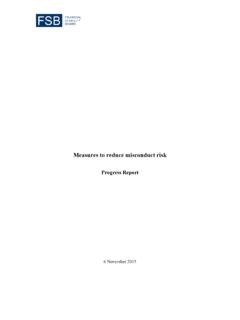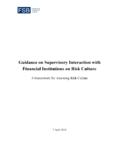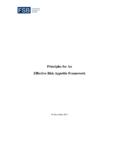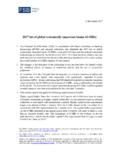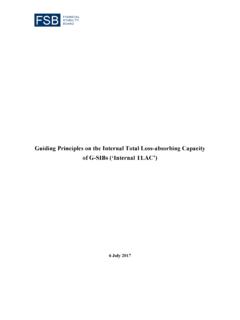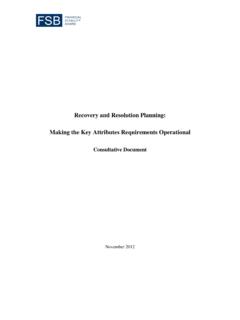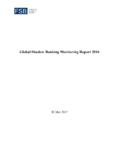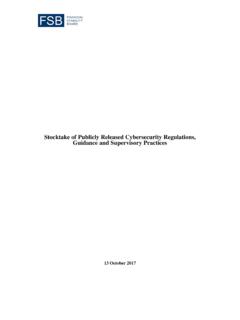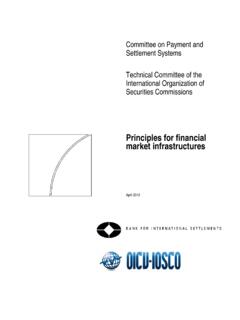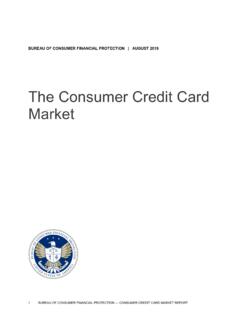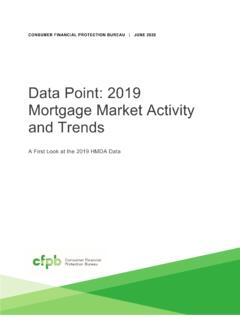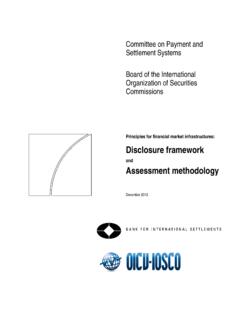Transcription of Holistic review of the March market turmoil
1 Holistic review of the March market turmoil 17 November 2020 The financial Stability Board (FSB) coordinates at the international level the work of national financial authorities and international standard-setting bodies in order to develop and promote the implementation of effective regulatory, supervisory and other financial sector policies. Its mandate is set out in the FSB Charter, which governs the policymaking and related activities of the FSB. These activities, including any decisions reached in their context, shall not be binding or give rise to any legal rights or obligations.
2 Contact the financial Stability Board Sign up for e-mail alerts: Follow the FSB on Twitter: @FinStbBoard E-mail the FSB at: Copyright 2020 financial Stability Board. Please refer to the terms and conditions iii Table of Contents Executive summary .. 1 FSB work programme on NBFI .. 3 1. Introduction .. 4 2. Overview of financial market developments around March .. 5 Prelude to the market turmoil .. 5 Flight to safety .. 5 Dash for cash .. 6 Easing of market stress .. 9 3. Origins and backdrop of the March market stress .. 10 The COVID-19 shock .. 10 Global economic and financial backdrop.
3 10 Structural changes in the global financial system .. 12 4. The propagation of the shock .. 17 The impact of the COVID-19 shock on financial markets .. 17 Factors shifting demand and supply of liquidity .. 17 The propagation of liquidity stress .. 24 5. Public sector responses .. 33 Measures taken .. 33 Outcomes .. 37 6. Conclusion .. 40 Lessons learned and issues raised .. 40 Policy implications and areas of further work .. 42 Annex 1: Timeline of financial market developments .. 44 Annex 2: Classification of policy measures .. 53 Abbreviations .. 56 iv 1 Executive summary The financial market turmoil in March , brought about by the COVID-19 shock, tested the resilience of the global financial system.
4 In contrast to the 2008 financial crisis, the shock originated outside the financial system. The pandemic and government containment measures led to a sudden sharp pullback in real economic activity and placed the financial system under strain. Some parts of the system, particularly banks and financial market infrastructures, were able to absorb rather than amplify the macroeconomic shock, supported by the post-crisis reforms. However, key funding markets experienced acute stress and public authorities needed to take a wide range of measures to support the supply of credit to the real economy.
5 Global economic and financial developments prior to the pandemic had made the financial system more susceptible to shocks. The outlook for growth and corporate earnings had begun to weaken; real interest rates had been on a downward trajectory; while corporate indebtedness was high and rising. A search for yield led a number of investors away from high quality cash-like assets down the credit curve. Favourable external financing conditions strong global risk appetite and a drop in US Treasury yields supported cross-border lending and debt portfolio flows to emerging market economies (EMEs), and encouraged greater reliance on dollar-denominated borrowing by firms in those countries.
6 Structural changes in the financial system over the past decade have also increased the reliance on market -based intermediation to finance growing levels of debt. The G20 regulatory reforms and market -driven adjustments in the aftermath of the 2008 financial crisis have resulted in credit risk being increasingly intermediated and held outside the banking sector. Interconnectedness has also increased and taken new forms in some areas. With the overall growth of non-bank financial intermediation (NBFI), market liquidity has become more central to financial resilience. At the same time, market -making capacity by banks may have become more constrained, while the provision of liquidity by some new entities and in electronic markets is potentially less robust.
7 The breadth and dynamics of the economic shock and related liquidity stress in March were unprecedented. As in previous cases, the shock caused a fundamental repricing of risk and a heightened demand for safe assets. However, the stress also led to large and persistent imbalances in the demand for, and supply of, liquidity needed to support intermediation. On the demand side, non- financial corporates attempted to tap capital markets; demand for US dollar liquidity increased from foreign borrowers; non-government money market funds (MMFs) experienced significant outflows; and some open-ended funds also experienced redemptions.
8 On the supply side, reductions in risk appetite, regulatory constraints and operational challenges may have reduced dealers capacity to intermediate larger flows in some core funding markets. Particular activities and mechanisms in the financial system acted as mitigants or propagators of the liquidity stress. Central counterparties remained resilient despite market turbulence, though margin calls may have been larger than expected in some cases, challenging liquidity risk management for some market participants and adding to the overall demand for cash. Some investors in open-ended investment funds may have faced incentives to redeem ahead of others.
9 While stronger bank capital and liquidity positions, built over the past decade as a result of the post-crisis reforms, helped to prevent a sharp rise in counterparty risks, banks may have been unwilling or unable to deploy substantial amounts of balance sheet capacity in an uncertain and 2 volatile environment. Dealers also faced difficulties absorbing large sales of assets, amplifying turmoil in short-term funding markets. market dysfunction was exacerbated by the substantial sales of US Treasuries by some leveraged non-bank investors and foreign holders. This combination of large asset sales, together with the limited capacity or willingness of dealers to intermediate in some markets, became self-reinforcing.
10 The policy response was speedy, sizeable and sweeping. The unprecedented policy actions by central banks alleviated market stress through different channels: asset purchases; liquidity operations, including for US dollars; and backstop facilities designed to provide targeted liquidity to specific financial entities ( MMFs and primary dealers). Regulatory and supervisory measures as well as fiscal policies complemented these central bank interventions. Securities regulators also took measures to support market functioning. The policy measures succeeded in alleviating market strains to date, with announcement effects appearing to be particularly important in restoring confidence and shaping the expectations of market participants.
